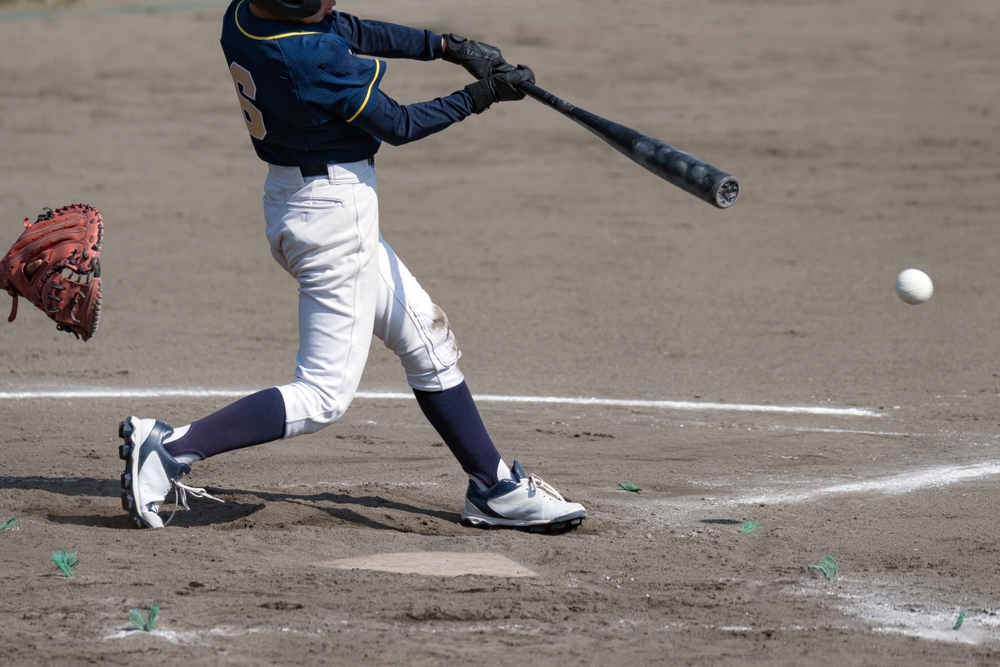
At Ballparks of America, we understand the dedication and hard work it takes to excel in youth travel baseball. From the players and coaches to parents and families, we want everyone to have the experience of a lifetime at our youth baseball complex in the heart of Branson, Missouri.
But we know that winning and performance start with practice, drills, and workouts. That’s why we’ve got our ultimate training and conditioning regimen to help young athletes reach their full potential on the field. This comprehensive guide covers everything from strength and agility drills to warming up and nutrition. From a coach looking to improve practices to a parent wanting to foster their player’s love of baseball, this guide can help give you direction for youth travel ball workouts.
Whether your player is just starting out or aiming to refine their skills, this regimen will provide the structure and support needed to enhance their performance and overall athletic development. Let’s get started on the journey to becoming a stronger, faster, and more resilient baseball player!
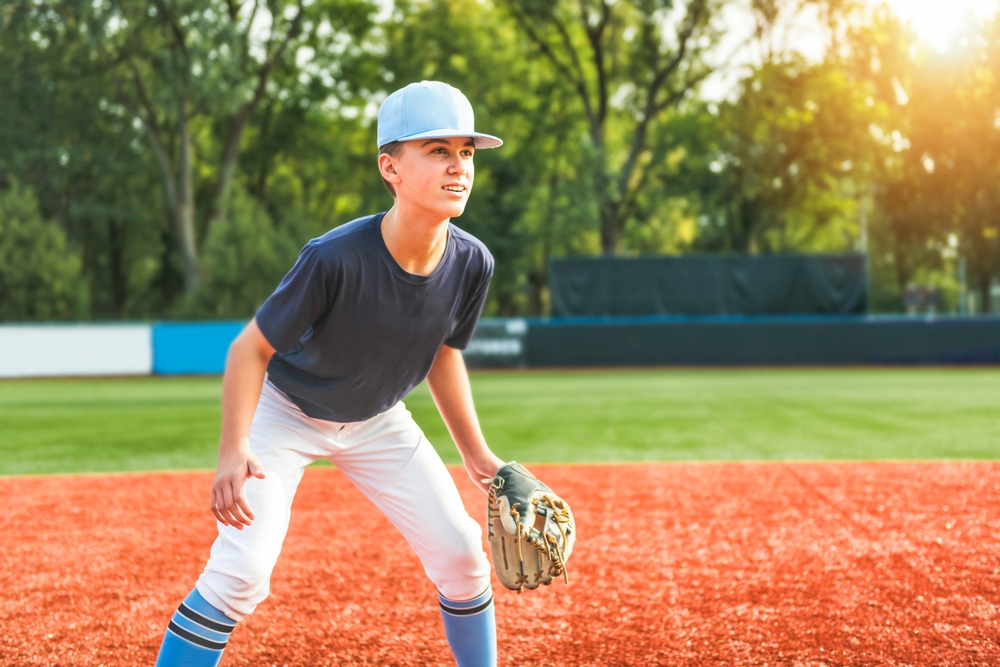
Working out needs the proper preparation so that your youth travel ball player can be safe while gradually meeting goals. The keys are persistence and patience. Your player will reach the level of conditioning they want. It will take time and dedication to achieve those results. But the overarching factor here should be safety.
Consulting with your child’s pediatrician before starting a workout routine for youth travel baseball is crucial for several reasons. Your child’s doctor can assess overall health and identify any underlying medical conditions that could affect their ability to safely participate in rigorous physical activity. They can also provide personalized advice on appropriate exercises based on your child’s age, physical development, and fitness level.
The doctor will also offer guidance on preventing injuries, which is particularly important as your youngster progresses. Regular check-ups, at least once a year, are a good idea to check on your child’s development.
Eating healthy is essential for youth travel ball players to maintain energy and support growing muscles during workouts and other physical activities. In general, follow these guidelines after consulting with your child’s pediatrician.
Balance the intake of carbohydrates, proteins, and fats during meals. Carbohydrates provide energy, proteins aid in muscle repair and growth, and fats support overall health.
Provide a meal rich in complex carbohydrates and lean proteins about 2 to 3 hours before your workout. Examples include whole grain pasta with chicken or a turkey sandwich on whole grain bread.
After workouts, focus on recovery with a combination of proteins and carbohydrates. Chocolate milk, yogurt with fruit, or a protein shake are excellent options to help muscles recover and replenish lost nutrients and to help muscles recover from strenuous workouts.
Keep snacks like fruits, nuts, and granola bars on hand for sustained energy throughout the day. Snacks also come into play before a workout for a boost of energy about an hour before starting physical activity.
Make sure your youth travel ball player stays hydrated. The general rule is 10 cups of water per day for youth ages 9 to 13 and 14 cups of water per day for youth ages 14 to 18, according to the National Athletic Trainers Association. The easiest way to do this is to take a sip of water every 15 minutes throughout the day, keeping a water bottle nearby during class at school and at home. If you prefer half-liter bottles of water, these are convenient and hold about 2 cups of water each.
Youth travel ball players should drink about 16 to 20 ounces of water 2 to 3 hours beforehand to ensure they start fully hydrated. During the workout, drink a cup of water every 10 to 20 minutes, especially in hot and humid conditions, to replace lost fluids. This helps prevent dehydration, which can lead to muscle injury.
After the workout, rehydration is crucial. Players should replenish fluids and electrolytes lost during the workout. If a player loses 1 pound of weight from water, they should drink 24 ounces (3 cups) of fluids. Including sports drinks with electrolytes can also help restore sodium and potassium levels lost through sweat. Be cautious with sports drinks, as too much can lead to an imbalance of electrolytes.
Once the weather turns warmer, it’s vital for your youth travel ball player to adapt to the heat. That means gradually increasing the intensity and duration of workouts, allowing the body to adjust safely to higher temperatures. The goal here is to reduce the risk of heat-related illnesses such as heat exhaustion and heat stroke.
Starting with shorter, less intense workouts and slowly building up over days or weeks can help the body improve its thermoregulation, sweat production, and cardiovascular efficiency in the heat. Your youth travel ball player will get more efficient workouts this way.
This progression also aids in preventing dehydration and electrolyte imbalances, as the body learns to manage fluid loss more effectively. Coaches and parents should monitor athletes closely, ensuring they stay hydrated and take regular breaks during practice sessions.
Managing heat and preventing heat-related illnesses during workouts is crucial for youth travel baseball players. Ensure proper hydration by drinking water before, during, and after each workout. Schedule workouts during cooler parts of the day, such as early morning or late evening. Provide regular breaks in shaded areas and encourage players to wear light, breathable clothing.
Coaches and parents should monitor for signs of heat-related illnesses, such as dizziness, headache, or excessive sweating. Use cooling techniques like wet towels and fans if necessary. Heat-related illnesses can happen even on cool days and when it’s cloudy. If possible, have workouts indoors rather than outside.

Warming up is one key to having a successful workout for a youth travel ball player. A warm-up loosens the muscles and prepares the body for a more intense workout, and it’s important to prevent injuries.
Start with dynamic stretches like leg swings and arm circles to increase blood flow and flexibility. Follow with sport-specific drills, such as light jogging and practice throws, to gradually elevate the heart rate and prepare the muscles for activity. Finish with agility drills, like ladder drills or cone sprints, to enhance coordination and readiness for game movements.
Baseball is a game of sudden movements. Dynamic stretching is designed to mimic the movements a youth travel ball player will make during the game. Whereas static stretching involves moving the muscles and holding them in one position, dynamic stretching utilizes soft, controlled motions to extend the range of muscles ahead of a workout.
Here are five effective dynamic stretches for a youth travel ballplayer ahead of a workout.
Stand next to a wall or support, swinging one leg forward and backward, then side to side. This stretch targets the hip flexors, hamstrings, and glutes, promoting flexibility and range of motion. The idea here is to get the legs moving in all directions, which you’ll need during a practice session and game.
Extend your arms out to the sides and make small circles, gradually increasing the circle size. This exercise warms up the shoulders and improves blood flow to the upper body. Arm circles can help with throwing motions and batting because the upper body must move in a coordinated fashion to accomplish both tasks.
Step forward with one leg, lowering into a lunge while keeping the knee aligned with the ankle. Alternate legs while walking forward. This stretch strengthens and stretches the hip flexors, quadriceps, and glutes. You’ll need these muscles tuned for batting, running, and chasing down a hit while you’re in the field.
Jog in place, lifting your knees toward the chest with each step. This dynamic movement increases heart rate, enhances coordination, and stretches the lower body muscles. The idea with this dynamic stretch is to prepare your body for sudden, explosive moves like hitting and diving for a ball.
Stand with your feet shoulder-width apart, and rotate the torso from side to side. This stretch warms up the core and improves flexibility in the spine, important for batting and fielding movements. You’ll have better movements with the hips and legs as you work out.
A general warm-up for youth baseball players should focus on moving all parts of the body while raising the heart rate gradually ahead of a more intense workout. Start with 5 to 10 minutes of light cardiovascular exercise, such as jogging or brisk walking, to increase heart rate and blood flow to the muscles. Consider a jog around the baseball field.
Another general warm-up would be jumping jacks for 5 to 10 minutes if you’re indoors. This fun workout gets the upper and lower body moving while stretching the muscles ahead of more intense movements.
Warm up with baseball-specific drills ahead of more intense workouts. Some of these five drills require the help of a buddy, coach, or family member.
Playing catch gets your body used to one of the basic movements in baseball. Begin with short-distance throws to gradually warm up the arm and shoulder muscles.
Have players field slow ground balls, starting with a few steps forward and gradually increasing the speed and difficulty. This drill warms up the legs, core, and glove hand.
Practice catching fly balls to warm up the legs and improve hand-eye coordination. Start with easy, high tosses and progress to more challenging fly balls.
Use a batting tee to practice hitting, focusing on form and swing mechanics. This drill helps warm up the core, legs, and upper body muscles used in hitting.
Perform short sprints between bases to warm up the legs and improve speed and agility. Practice starts, stops, and turns to simulate game situations.
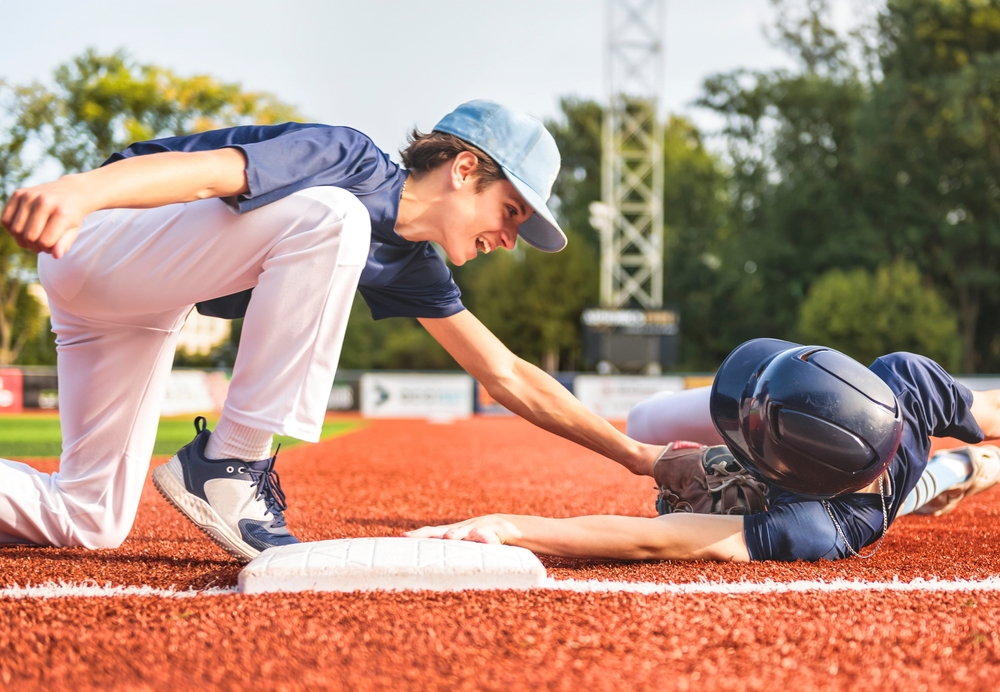
Now that your general warm-up is complete, it’s time to move on to skill development for youth travel ball players. Developing hitting and fielding skills turns you into a complete baseball player, whether you want to get more out of your season or you want to get better overall as you progress through the sport. These hitting and fielding drills help you with muscle movement and anticipating where your body should move during certain game situations.
Hitting is a phase of the game that can turn into a player to be reckoned with. It’s not just about making contact. Hitting is about making good contact. See these five hitting drills to improve your acumen in the batter’s box.
Have a pile of wiffle balls for this drill. The goal is to improve bat speed and hand-eye coordination. Your buddy crouches off to the side while softly tossing wiffle balls into the batter’s wheelhouse. The batter then makes contact with the ball, hitting it into a chain-link fence a few feet away. This drill is perfect against an outfield fence. The person tossing the wiffle ball should do so rapidly and in succession.
Good, old-fashioned batting practice is a great way for youth travel ball players to get into the right hitting motion. Have a coach stand behind the screen at the pitcher’s mound to help players develop. BP is also great for fielders because they never know what ball is coming next. If you want to practice batting on your own, head to your favorite batting cages!
Whereas batting practice simulates regular pitches, a soft toss drill enhances timing, bat speed, and hand-eye coordination. Have a coach pitch the ball at different speeds, which trains a batter to look for a fastball, curveball, or off-speed pitch. It’s also a great teaching tool for watching where a ball goes during specific pitches to batters.
Have your youth ball player stand in the batter’s box as if they are going to pull the ball to the opposite field of where they would normally hit. For a right-handed batter, that means putting the left foot closer to first base. A left-handed batter would put the right foot closer to third base. Pitch the ball so the batter can recognize how and when to swing as they try to put the ball in the opposite field of where they normally drive a pitch.
Here’s a fun game to play for the whole team to play. Have a scoring system where a batter scores points for hitting a ball to a certain part of the field. The batter with the most points after 10 hits wins!
Fielding is essential to baseball defense. First, you need to be in the right position on each pitch to make plays. Then, executing the play is vital to success. Look at these five effective fielding drills for youth baseball players to perform during a workout.
This drill focuses on fielding ground balls cleanly and making accurate throws. Players line up and take turns fielding ground balls hit by a coach. Emphasize proper fielding mechanics, which include getting low, keeping the glove down, and using the body’s momentum to make a smooth transition to the throwing motion. This drill improves reaction time, hand-eye coordination, and fielding fundamentals. Mix up this drill a bit by telling each player where to throw the ball, such as first base, second base, or home.
To improve tracking and catching fly balls, have players practice catching balls hit high into the air. This drill can be done with a coach hitting balls or using a machine. Players learn to judge the ball’s trajectory, get into the proper position, and use two hands to catch the ball securely. Emphasize communication between players to avoid collisions and ensure effective teamwork in the outfield. Use the sun or shadows to your advantage here so that players know how to use their sunglasses or hands to spot the ball without the sun interfering with the play.
This drill focuses on executing accurate and quick relay throws from the outfield to the infield. Set up a scenario where an outfielder fields a ball and makes a relay throw to an infielder, who then throws to a target such as home plate or third base. This drill helps players develop strong, accurate throws and improve their teamwork and communication skills. It’s essential for tagging runners out and making crucial plays during games.
Moving to someone’s backhand side takes a bit more effort than the glove-hand side. This drill is designed to enhance a player’s ability to field ground balls hit to their backhand side. Players position themselves and practice fielding backhanded grounders and making accurate throws. Emphasize proper footwork, glove positioning, and quick transitions. This drill helps infielders improve their range and ability to make plays on balls hit to their non-dominant side.
Short hops can confuse players because the position of the ball is in between the ideal position for fielding it. This drill, which is perfect for infielders, involves players fielding short hops, which are low bounces close to the ground. A coach or teammate tosses balls that bounce just in front of the fielder, who practices fielding them cleanly. This drill sharpens reflexes and hand-eye coordination, and it teaches youth ball players to stay low and use soft hands.

You’ll be pleased to know that strength training doesn’t have to involve fancy weights or a dedicated workout room! Bodyweight exercises and resistance bands offer cost-effective ways to improve muscles and strength without spending hundreds of dollars on weights.
Bodyweight exercises take advantage of the body’s weight and gravity to add resistance for muscles that need a workout. Discover five excellent bodyweight exercises for youth baseball players to improve their strength.
Push-ups are a fundamental exercise that strengthens the chest, shoulders, triceps, and core.
Variations such as incline push-ups or diamond push-ups can be used to target different muscle groups and add variety.
Squats are essential for building lower body strength, particularly in the quadriceps, hamstrings, and glutes. Strong legs are vital for running, jumping, and maintaining a stable stance during batting.
Adding variations like jump squats or single-leg squats can further enhance strength and balance.
Leg lifts are great core exercises that also strengthen the legs.
Variations include spreading the legs apart when they are in the air and bringing them together again before lowering them.
Lunges strengthen the legs and improve balance and coordination while also helping the knees. They target the quadriceps, hamstrings, glutes, and calves, which are all important for explosive movements in baseball.
Variations such as walking lunges or reverse lunges can add intensity and variety.
This exercise targets the lower back, glutes, and shoulders, promoting overall back strength and posture. Strong back muscles are essential for maintaining proper form and preventing injuries.
Remember to take brief breaks in between bodyweight exercises to give your muscles a breather.
Resistance bands act as weight because they work in combination with your body weight to resist certain motions. See these five resistance band exercises for youth ball players.
This exercise targets the upper back, shoulders, and biceps, which are crucial for throwing and batting.
This movement improves upper body strength and enhances posture.
Band squats enhance leg strength, targeting the quadriceps, hamstrings, and glutes.
This exercise adds resistance to a regular squat, increasing lower body strength essential for running and jumping.
Your youth ball player can strengthen the shoulders and upper back to improve throwing power and arm stability.
This movement helps build shoulder strength and endurance.
Band lateral walks target the hip abductors and glutes, making it easier to move side to side when fielding or running between bases.
Strengthen your core, obliques, and lower back for more powerful swings and throws with rotational movements.
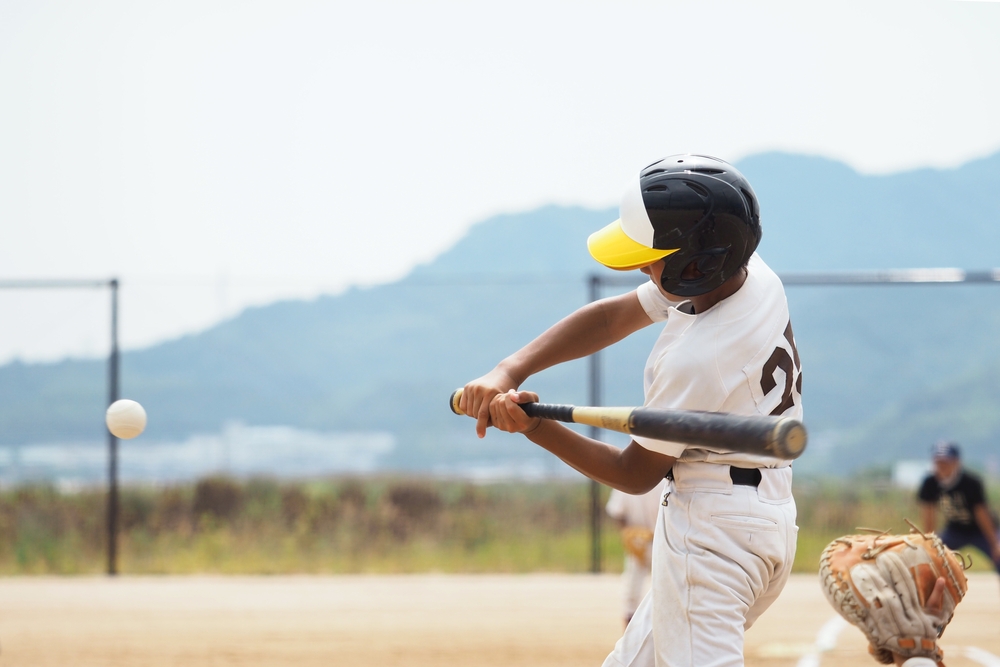
Agile movements involve going from a full stop to suddenly fielding, swinging, or running. Agility is a core principle of baseball because of the start-stop action. Conditioning, on the other hand, deals with your ability to perform over a longer time period during the course of a game or even multiple games in a short span of time.
Agility and conditioning are both important assets to bring to the baseball field.
Agility involves how quickly and easily you can change direction or speed. Take a look at these five agility training exercises to help you.
Ladder drills improve foot speed, coordination, and agility. These drills help develop quick feet and precise movements, essential for fielding and base running.
Investing in a set of 10 small cones might be a more practical choice than an agility ladder. Cone drills enhance directional speed and change of direction. These drills improve acceleration, deceleration, and the ability to quickly change directions, which are crucial for fielding ground balls and reacting to plays.
This exercise targets lateral agility and leg strength. You’ll improve side-to-side movements, essential for fielding and defensive positioning.
Box drills, or square drills, involve moving in different directions among a set of four cones. This enhances multi-directional agility and helps you transition between different movements quickly and efficiently.
This drill enhances agility and coordination while showcasing your ability to navigate through obstacles and make quick directional changes, useful for avoiding tags and maneuvering around the bases.
Conditioning drills aim to foster your durability and stamina throughout a game and when making tough, long runs after a fly ball or running around the bases.
Interval running is an effective way to build cardiovascular endurance and improve stamina. You’ll alternate periods of high-intensity running with low-intensity jogging or walking. This type of training helps increase aerobic capacity and prepares you for the bursts of speed required during games.
Incorporating longer runs into a training regimen helps build a strong aerobic base. Run at a steady pace for 20 to 30 minutes. Long-distance running improves cardiovascular endurance, allowing you to maintain stamina throughout a game. Don’t run too fast, but run enough to where you can have a conversation with a running buddy without being out of breath. Consider running around the baseball field for 10 laps.
Bicycling is a great way to condition yourself without doing a lot of heavy lifting. Make sure you are safe by wearing a helmet during your ride. If you can, find a dedicated trail for bikers and joggers while obeying rules and being courteous.
Running the bases combines agility and conditioning into one exercise. Rather than actually touching the bases as you run, simply run around them.

Cooling down after a good workout helps your muscles ease back to normal levels. Did you remember to stay hydrated during your workout? Don’t neglect your hard-working body in the midst of your training for travel ball season. See our cool-down routine for more details.
We talked about dynamic stretching to warm up for your workout. Now, we’ll get into static stretching, where you stretch and hold a movement as part of your cool-down routine following a workout. These stretches help reduce muscle tension and promote recovery after intense physical activity. See these five stretches.
This stretch helps alleviate tightness in the hamstrings, the muscles on the bottom part of thighs.
Stretching the quadriceps helps reduce soreness and improve flexibility in the front thigh muscles, which are heavily used during batting and fielding.
Shoulder muscles can be overtaxed when it comes to baseball, especially in pitchers. That’s why shoulder stretches are key to your throwing and batting motions.
The butterfly stretch helps the muscles that allow you to run quickly. It opens up the hips and groin area, improving flexibility and reducing the risk of injury.
Whereas the biceps are the bulging muscles of your upper arms, the triceps are the muscles at the back of your upper arms in between the elbow and shoulder. Stretching the triceps is beneficial for maintaining flexibility and reducing tension in the arms, so you can be more limber for throwing and batting.
Foam rollers are relatively inexpensive and can give your stretch routine some extra movement to relax the muscles after a workout. These movements can enhance recovery, improve flexibility, and reduce muscle tension.
This exercise helps release tension in the quadriceps at the front of the thighs, which are heavily used during running and squatting movements.
This gentle exercise targets the back side of the thighs.
Rolling the calves helps alleviate tightness from running and sprinting.
This exercise helps improve mobility and reduce tension in the upper back (the thoracic spine) after all of the throwing and hitting you did during your workout.
How are your knees feeling? This exercise targets the IT band, reducing tightness and preventing knee pain.
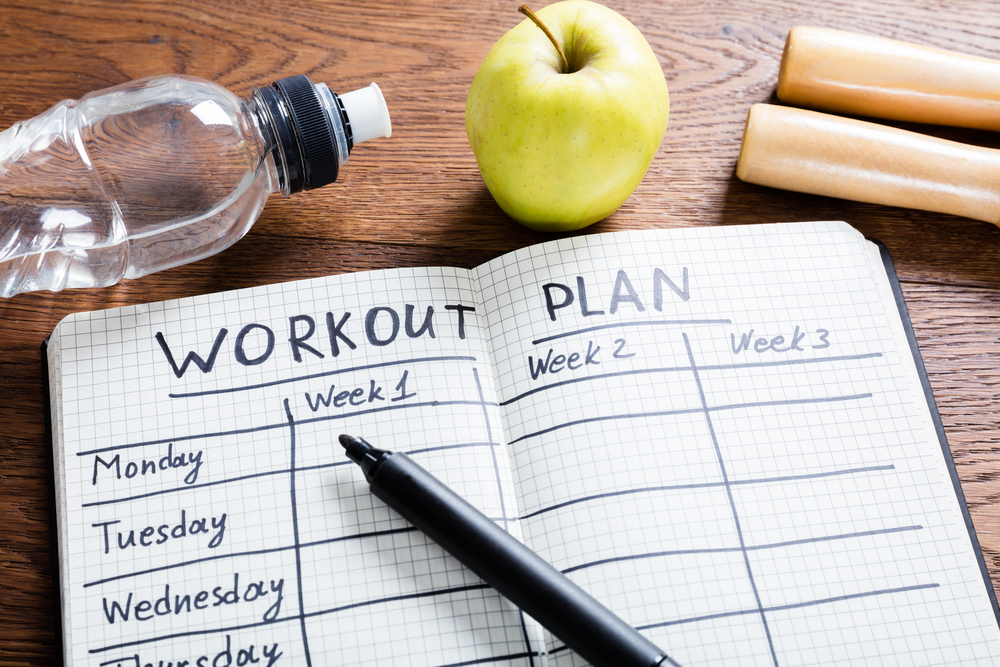
Working out can be a regular routine for your youth baseball player. Just make sure they get plenty of rest in between workout days. Check out our weekly workout schedule to achieve great results. Don’t forget to keep up with schoolwork, homework, and other activities!
Static stretches (hamstring stretch, quadriceps stretch, shoulder stretch)
Static stretches (calf stretch, hip flexor stretch)
Static stretches (hamstring stretch, quadriceps stretch, shoulder stretch)
Light cardio (jumping jacks or jogging in place)
Light stretching (focus on any tight areas)
Light jogging or dynamic stretches (high knees, butt kicks)
Static stretches (hamstring stretch, quadriceps stretch, calf stretch)
This schedule balances strength, agility, conditioning, and flexibility to enhance your overall performance while giving you adequate rest for recovery. Adjustments can be made based on your specific needs and fitness level.
We want your youth baseball player to get the most out of their training. If you have any questions or want to book your team for a tournament, contact us at Ballparks of America or call (417) 464-6333.